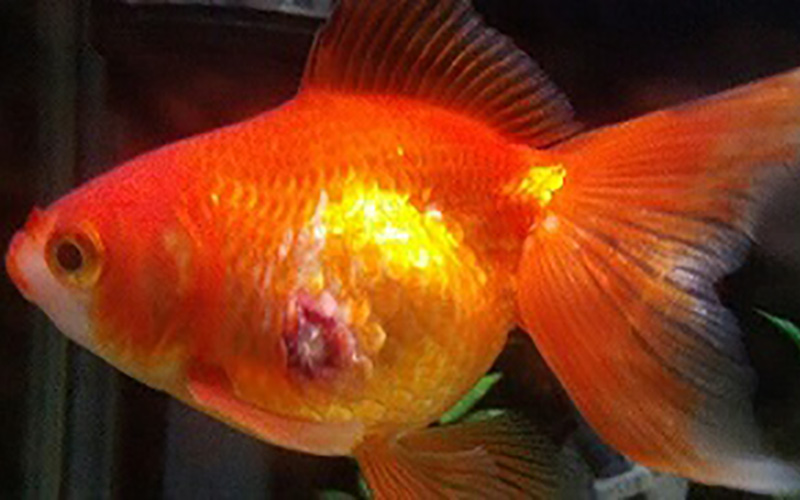knowledge
When you buy a goldfish, you want to keep the best goldfish possible. In this article, I would like to explain some points that even a newcomer can understand among the many goldfish available.

In the beginner's course, I explained to watch for diseases, but in the intermediate course, I will explain the color of the water this time because it is a risk hedge by squashing any possible diseases in advance.
Some people who are thinking about purchasing goldfish at specialty stores actually view the aquarium and consider whether to buy it. If the same species of goldfish is displayed and sold in multiple tanks, it is natural to choose the tank with the lowest possibility of disease. However, there is no way to compare if you do not know the point of comparison.
The first thing to check is the color of the aquarium. If possible, try to avoid purchasing goldfish with white or milky-white aquariums. White or milky-white water does not have a good balance of bacteria and other organisms, so the possibility of disease due to pathogens is high.
If you are concerned or are not familiar with the disease, please refrain from buying goldfish in white or milky-white aquariums.

When purchasing goldfish, there are a variety of goldfish to look at in specialty stores. You have to choose from among them.
When choosing a goldfish, though, consider the superiority of the goldfish,The first thing you should be concerned about is whether it is wounded or injured. For example, if the tail fin is bent to one side or the other, or if the goldfish does not have a good balance between the left and right sides, avoid it as much as possible.Goldfish that are not very well balanced from side to side are always under stress because of the constant imbalance of their bodies, so the risk of disease or death is very high.
However, it is not always the case that all goldfish with scars or injuries are bad. Goldfish that have just arrived at a specialty store may come in bags containing dozens or hundreds of goldfish. If the injury is only one or two scales, there is little need to worry because it is likely to be cured.
Not all injuries are bad, but there are injuries that heal and those that do not, so if you can distinguish between them, you are more likely to find the goldfish you want.

In the beginner's level section, we explained how to keep a variety of goldfish that are easy to keep, but in the intermediate level section, we will explain how goldfish are compatible with each other. When keeping new goldfish, there are few people who already have goldfish in the aquarium they plan to put in. In such cases, we don't want them to fight with the goldfish you already have and we want them to get along well with each other.
At that point, chemistry becomes important. There are two parts to compatibility: the part that cannot be understood until swimming together and the part that can be known in advance.
The first part that can be determined in advance is the species. For example, if you mix Japanese goldfish and Ranchu-type goldfish, the Japanese goldfish may chase the Ranchu-type goldfish around and weaken the Ranchu-type goldfish.If you know the type of goldfish you are currently keeping, you can reduce your anxiety by purchasing a goldfish that is compatible with it. If you are not sure which type of goldfish is compatible with your current goldfish, we recommend that you ask the store staff for advice.
In addition to breed, you should also be aware of differences in body size. If the body sizes are too different, the larger goldfish may have difficulty eating the smaller goldfish when the larger goldfish eats the food, and if this continues, the size difference may widen further.So you should first consider how much difference there is in body size.